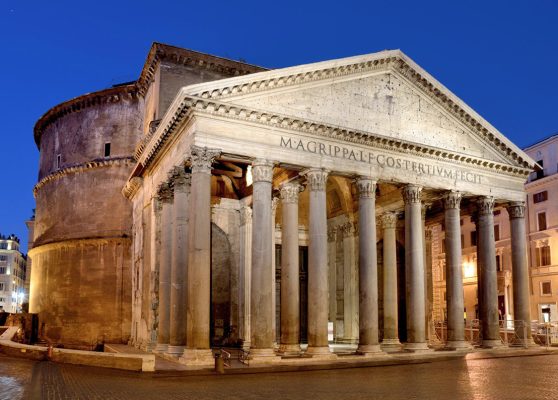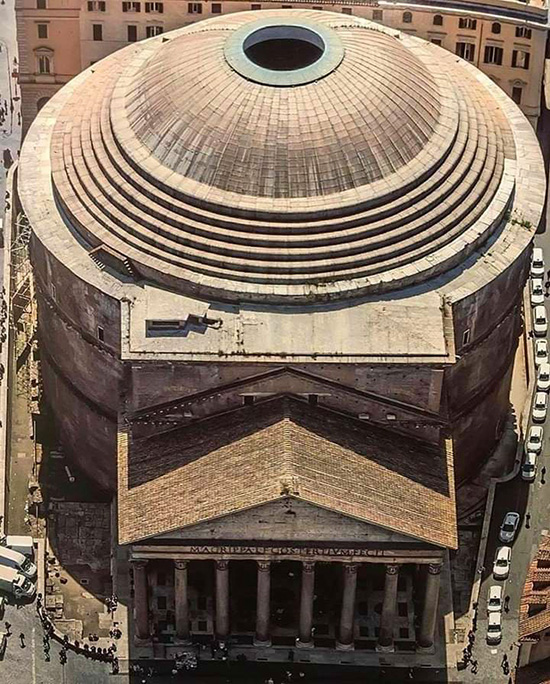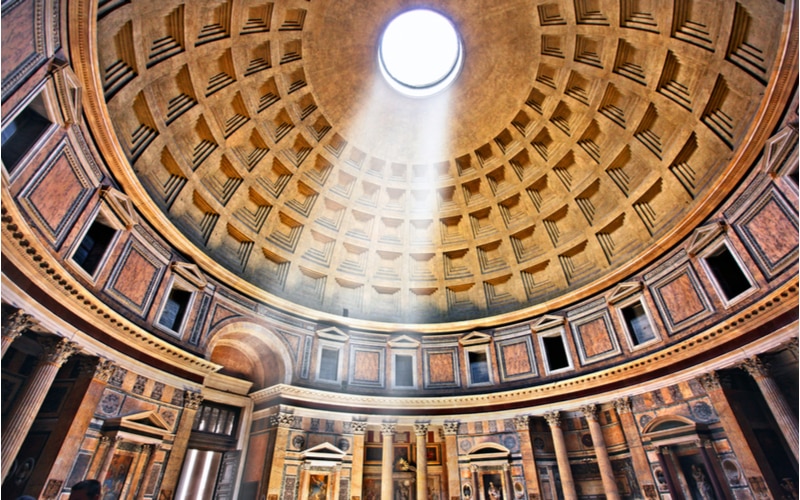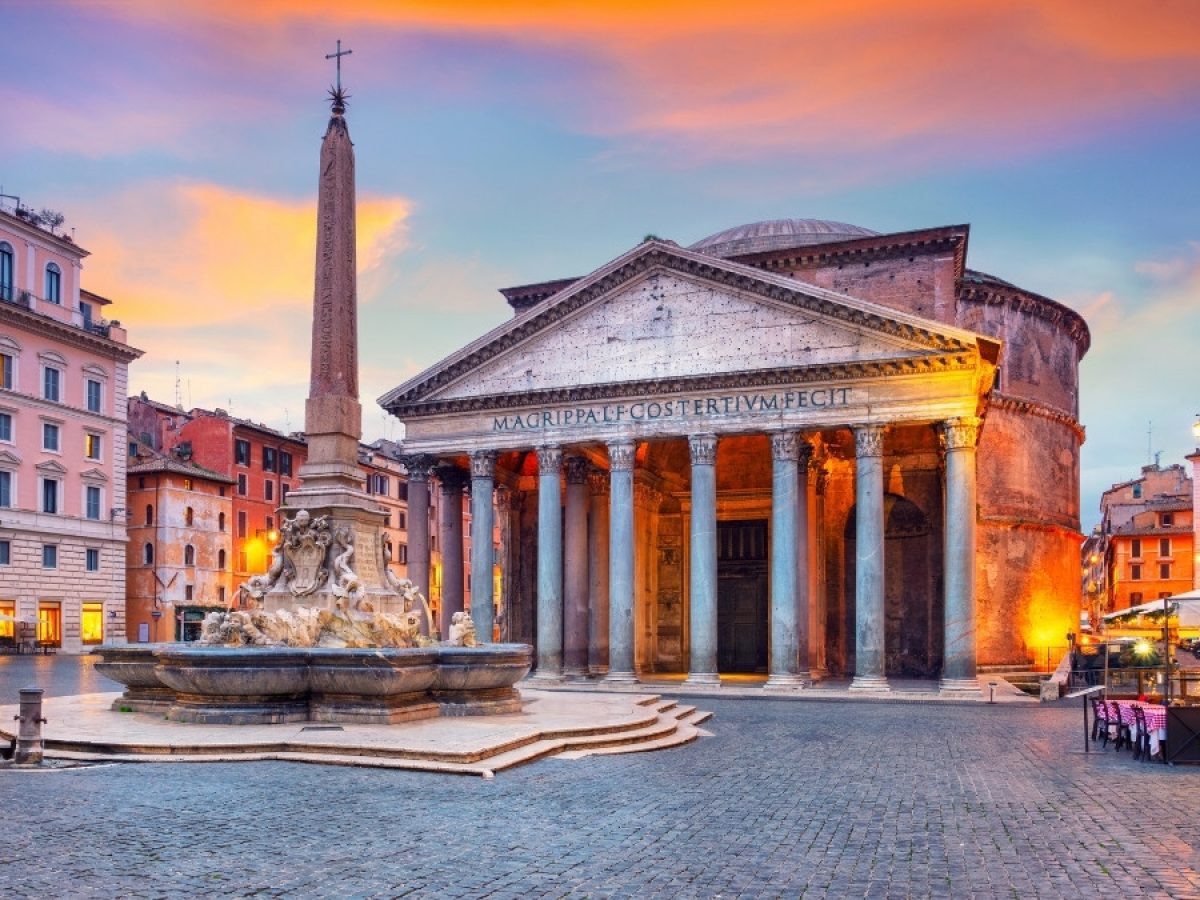The Pantheon, a wonder of two thousand years ago
Not all bad comes to hurt.
Sometimes popular wisdom is useful to summarize history better than a treatise, as in the case of the Pantheon.
Yes, because what is one of the most visited museum sites in Italy owes its incredible conservation to the fact that it was unexpectedly transformed into a church back in 609, like Sancta Maria ad Martyres.
A setback for a structure that had been erected for the first time – according to legend – in the seventh century before the Common Era and, more realistically, 25 years before the year zero by Marco Vipsanio Agrippa, with very different intentions.
The fact that the Pantheon, built as a temple dedicated to all the divinities, then moved on to the veneration of only one, however meant that it was saved from the iconoclastic fury of the Christian religion.
Religion for which the immense ancient beauties were good only to be dismantled and reused to erect new churches or prestigious buildings.
A practice that has led to the destruction of an immense historical heritage, lost forever.
The history of the Pantheon is however troubled almost immediately.
Destroyed by fire in 80, it was restored under Domitian; the fire, however, does damage again in 110, apparently following the fall of lightning. The Pantheon is rebuilt again, even if the dynamics are not clear.
For some – as reported in the Scriptores Historia Augustea – Hadrian rebuilds it, perhaps also collaborating on the project, for others Apollodorus takes care of it on Trajan’s order, before it is demolished and rebuilt by Hadrian.
However, the most credible reconstruction is that according to which the restoration began under Trajan and was completed with Hadrian.
Whatever the truth, the result is still there for all to see today and bears witness to the architectural genius of the Romans.
Consisting of a spectacular pronaos with Corinthian columns, a forepart and a large circular cell that earned it the popular nickname of “rotonna”, the Pantheon is still an example of architecture.
The dome, in particular, made up of five orders of twenty-eight coffers, of decreasing size as you go up, is a true marvel of technique. The structure, increasingly lighter up to the top, ends with a large opening with a diameter of 9 meters, called the “Oculus”, which is also the only source of light in the building.
In this regard, the legend is widespread that water does not enter the opening in the event of rain, thanks to the so-called “chimney effect”. It’s actually a sort of vintage “fake news”: it’s raining inside the Pantheon! To the point that the underlying part of the floor is equipped with 22 holes that help the water flow out.
However, it is true that, with its 44.30 meters of internal diameter, the dome of the Pantheon is still the largest hemispherical dome ever built in non-reinforced concrete.
In short, the Pantheon is an architectural marvel that has watched over human events for over two thousand years.
Hits: 0









